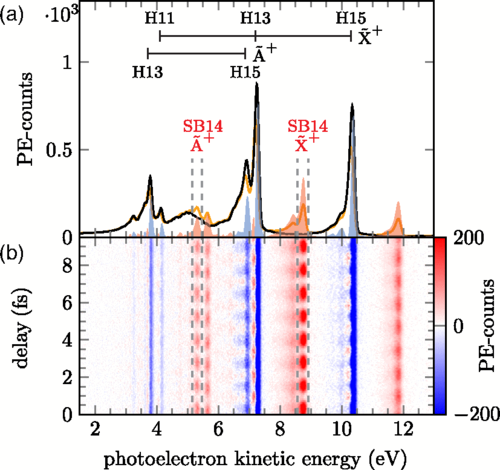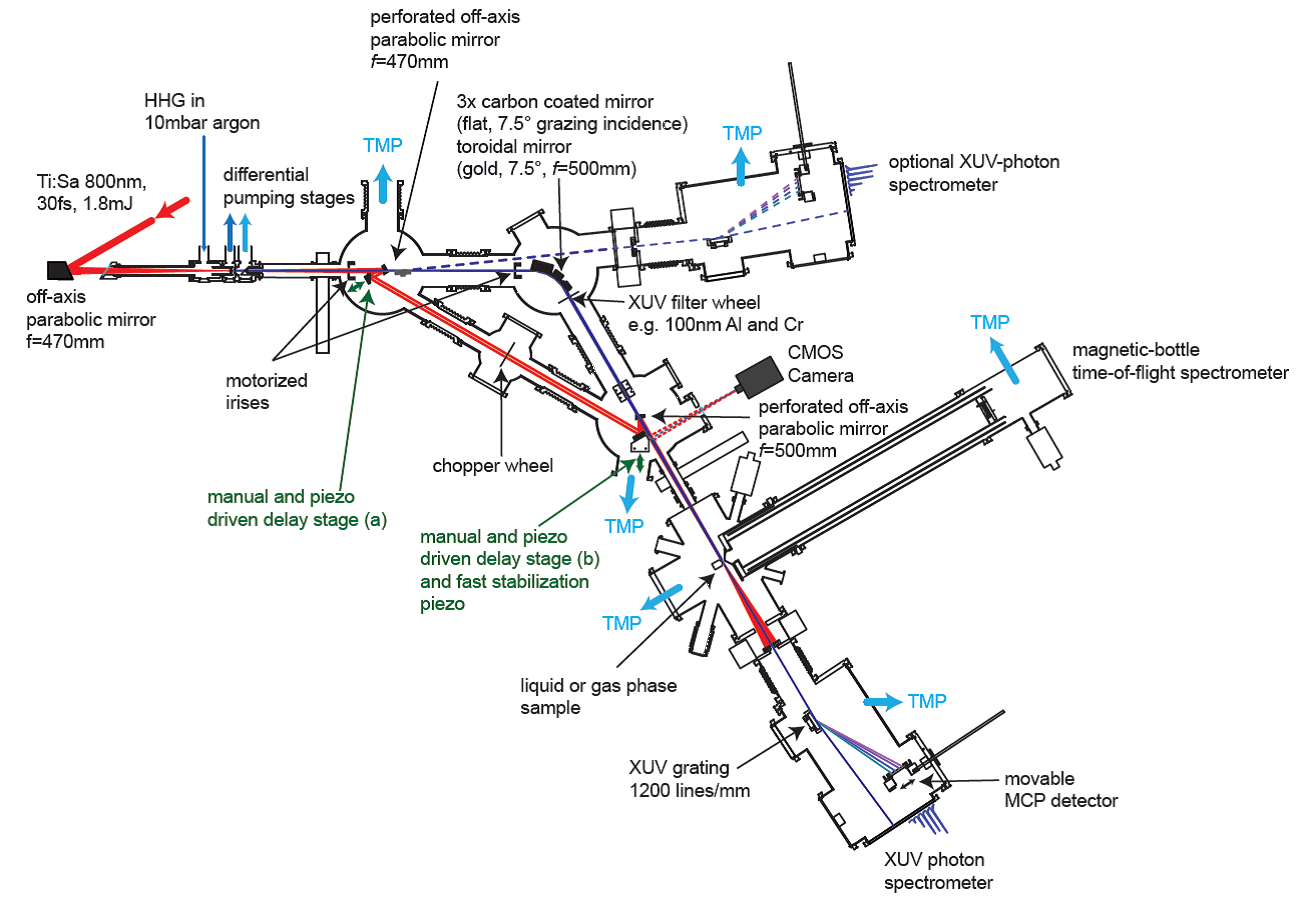Attosecond Spectroscopy of Gases
Actively-stabilized attosecond beamline
We have built a compact and versatile beamline for attosecond spectroscopy. The setup consists of a gas cell for high-harmonic generation followed by a delay line that spatially separates and then recombines the extreme-ultraviolet (XUV) and residual infrared (IR) pulses. The beamline introduces a controlled and actively-stabilized delay between the XUV and IR pulses on the attosecond timescale. A new active-stabilization scheme combining a helium-neon-laser and a white-light interferometer minimizes fluctuations and allows to control delays accurately (26 as rms for 1.5 h) over long timescales. The high-order harmonic-generation region is imaged via optical systems, independently for XUV and IR, into an interaction volume to perform pump-probe experiments. As a consequence of the spatial separation, the pulses can be independently manipulated in intensity, polarization and frequency content. The beamline can be combined with a variety of detectors for measuring attosecond dynamics in gases and liquids.
Publications:
[1] M. Huppert, I. Jordan, H. J. Wörner
DownloadAttosecond beamline with actively stabilized and spatially separated beam paths (PDF, 3.4 MB)vertical_align_bottom
Rev. Sci. Instrum. 86, 123106:1-8 (2015)
doi: external page10.1063/1.4937623call_madeexternal pagecall_made
Attosecond delays in molecular photoionization
We report measurements of energy-dependent photoionization delays between the two outermost valence shells of N2O and H2O. The combination of single-shot signal referencing with the use of different metal foils to filter the attosecond pulse train enables us to extract delays from congested spectra.
Remarkably large delays up to 160 as are observed in N2O, whereas the delays in H2O are all smaller than 50 as in the photon-energy range of 20–40 eV. These results are interpreted by developing a theory of molecular photoionization delays. The long delays measured in N2O are shown to reflect the population of molecular shape resonances that trap the photoelectron for a duration of up to ∼110 as. The unstructured
continua of H2O result in much smaller delays at the same photon energies. Our experimental and theoretical methods make the study of molecular attosecond photoionization dynamics accessible.

Publications:
[2] M. Huppert, I. Jordan, D. Baykusheva, A. von Conta, H. J. Wörner
DownloadAttosecond delays in molecular photoionization (PDF, 585 KB)vertical_align_bottom
Phys. Rev. Lett. 117, 093001 (2016)
doi: Download10.1103/PhysRevLett.117.093001vertical_align_bottom

